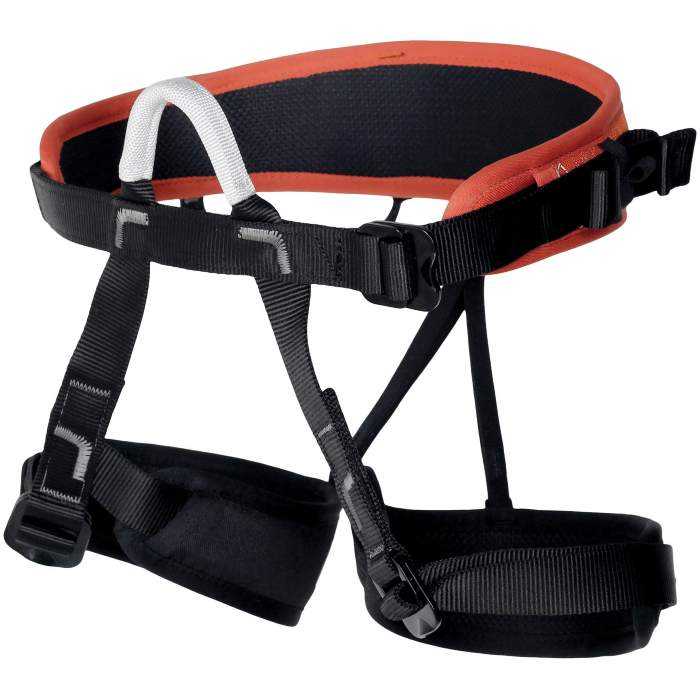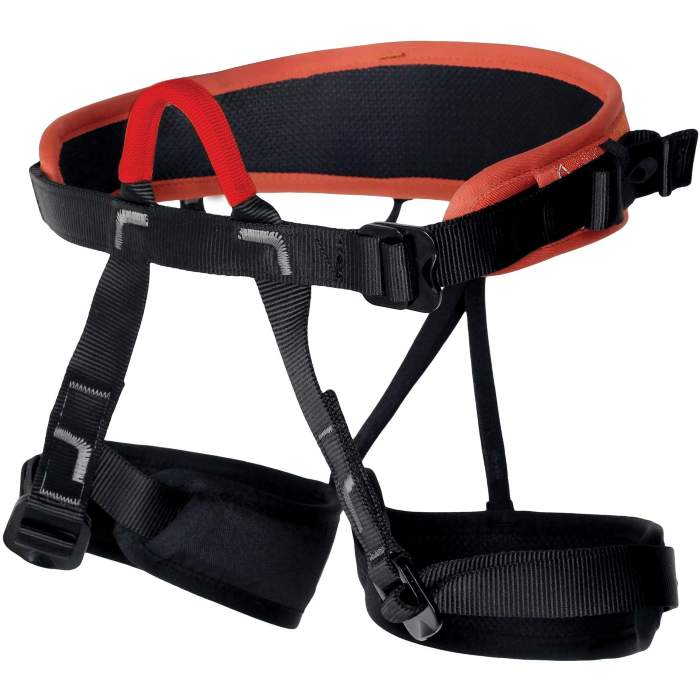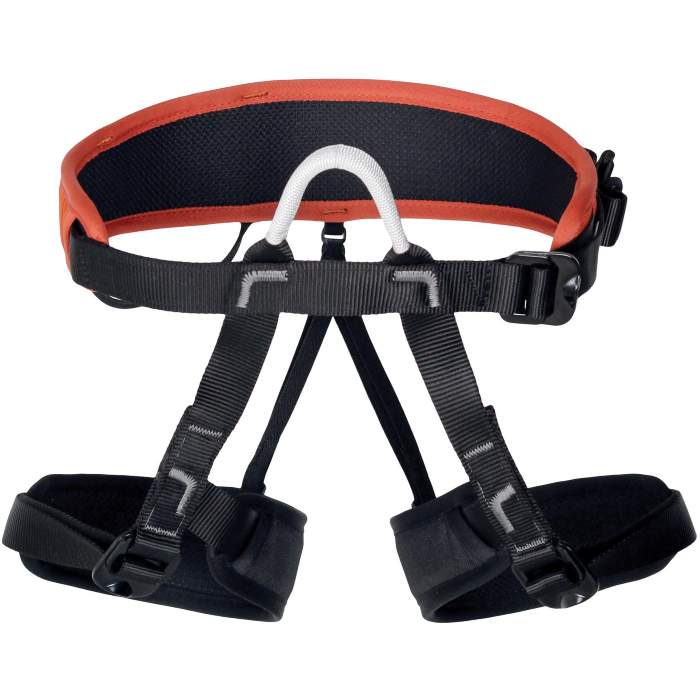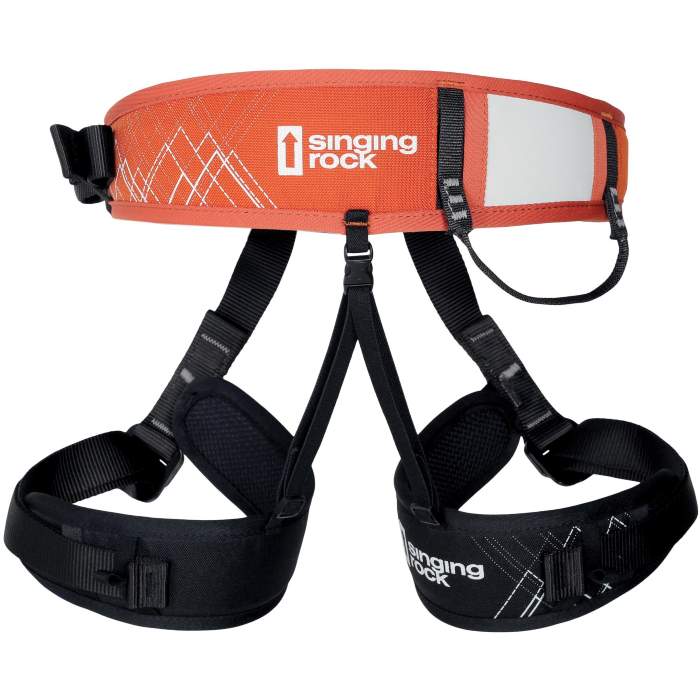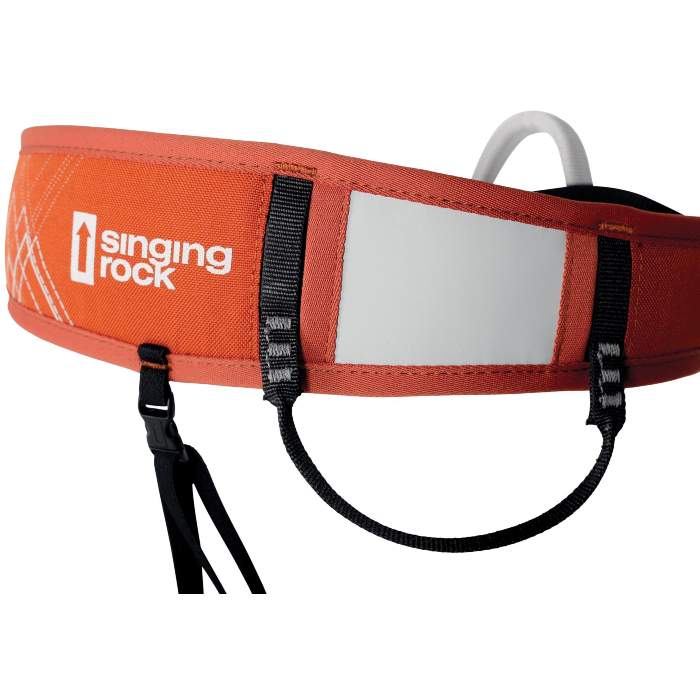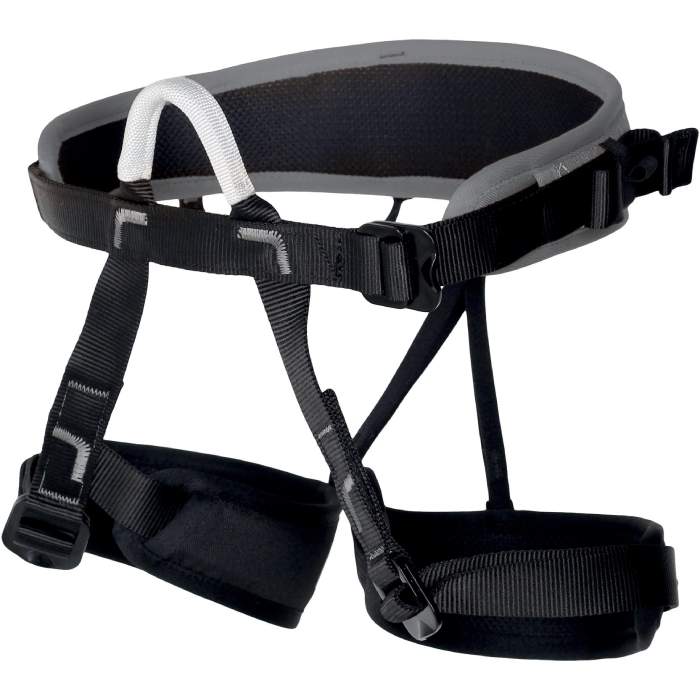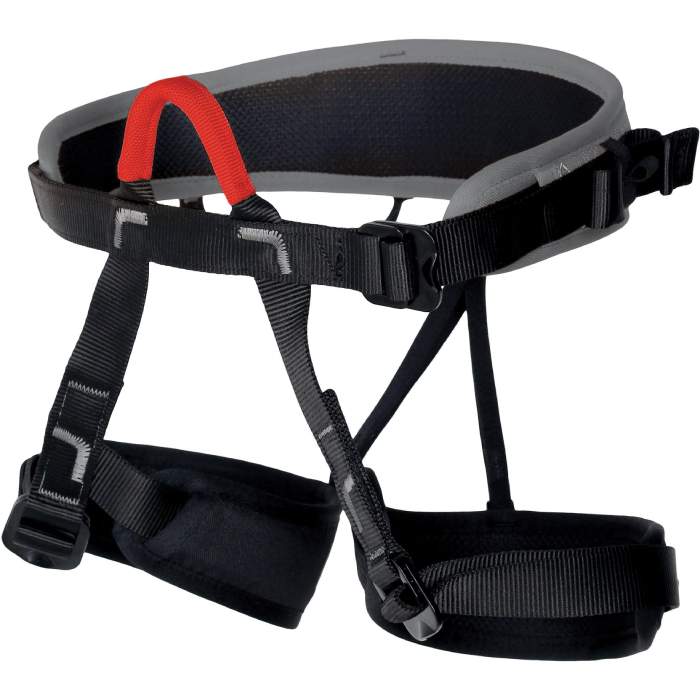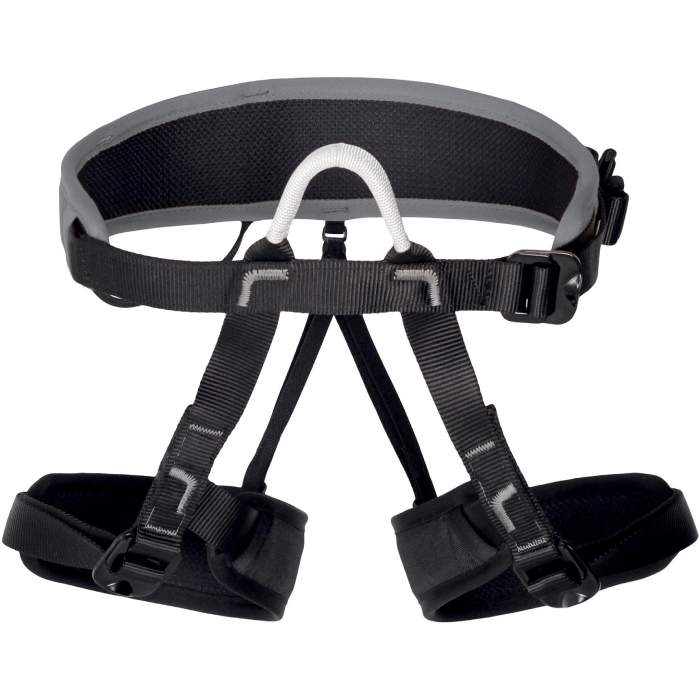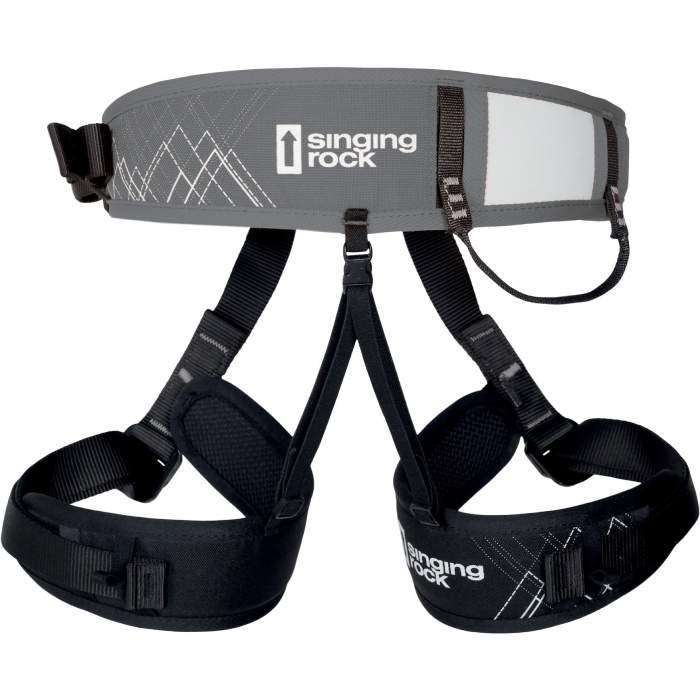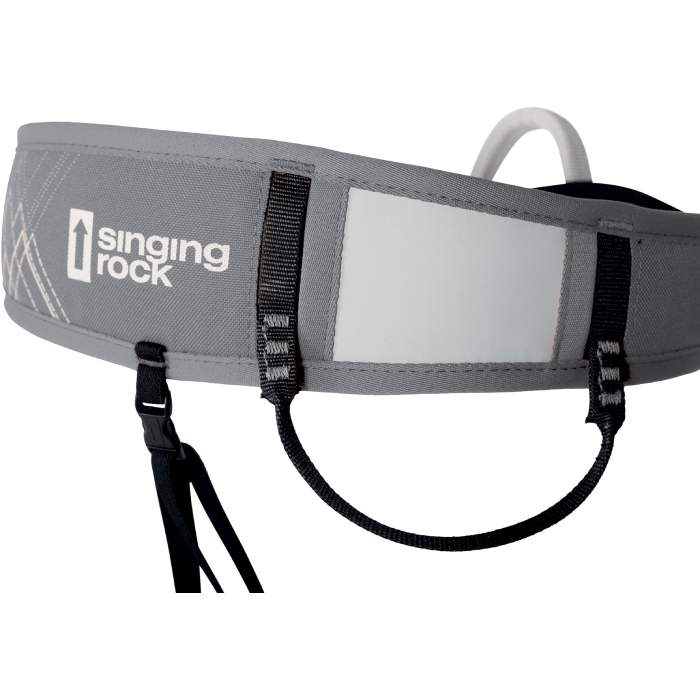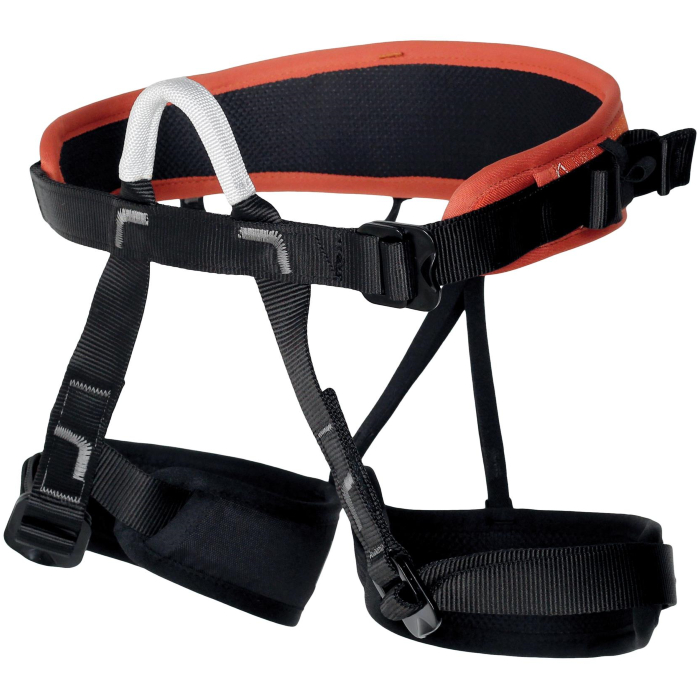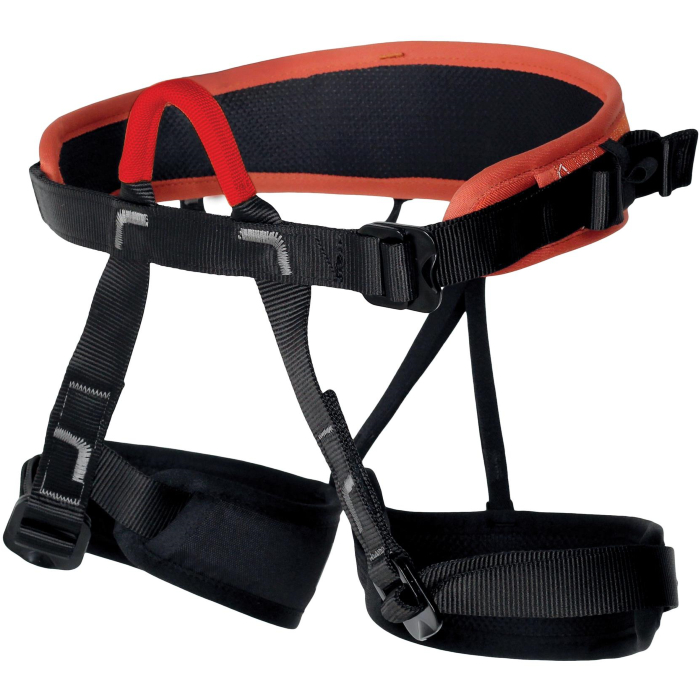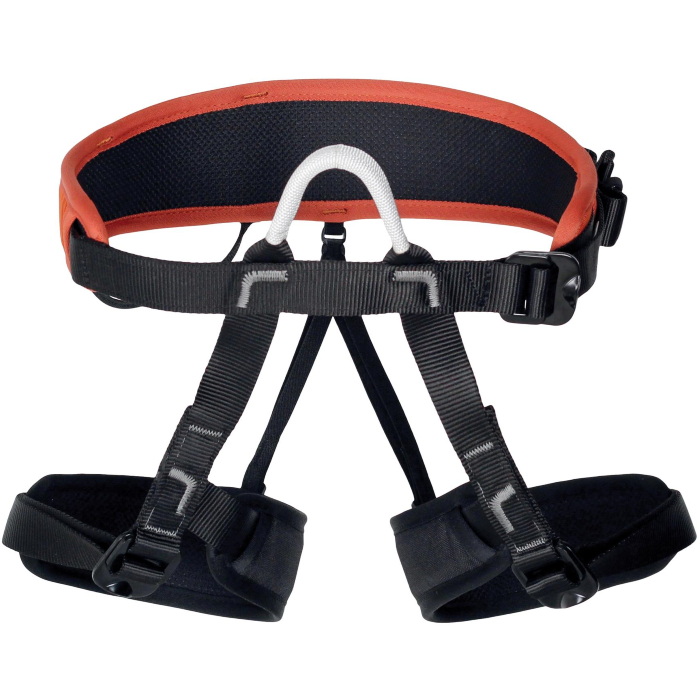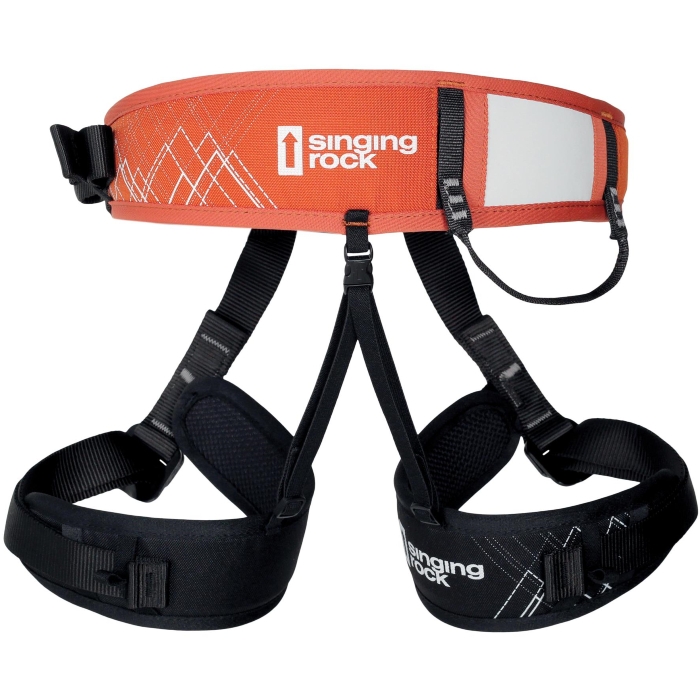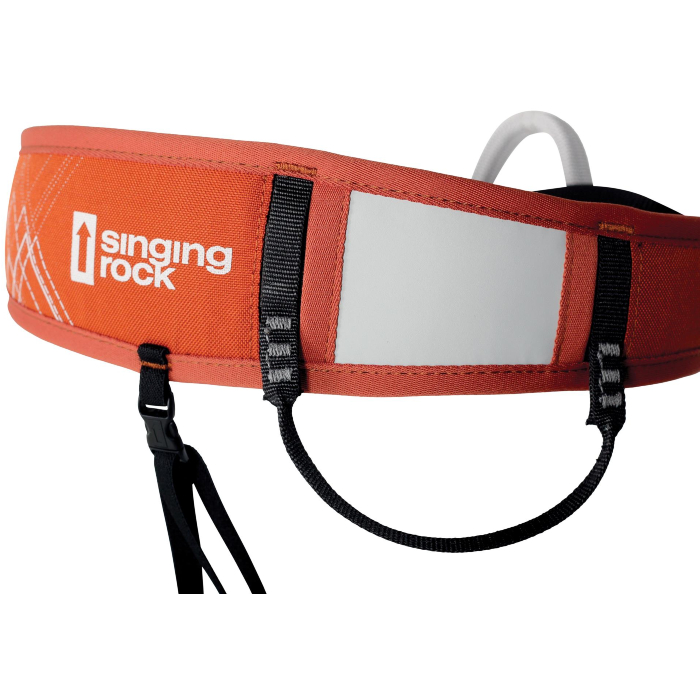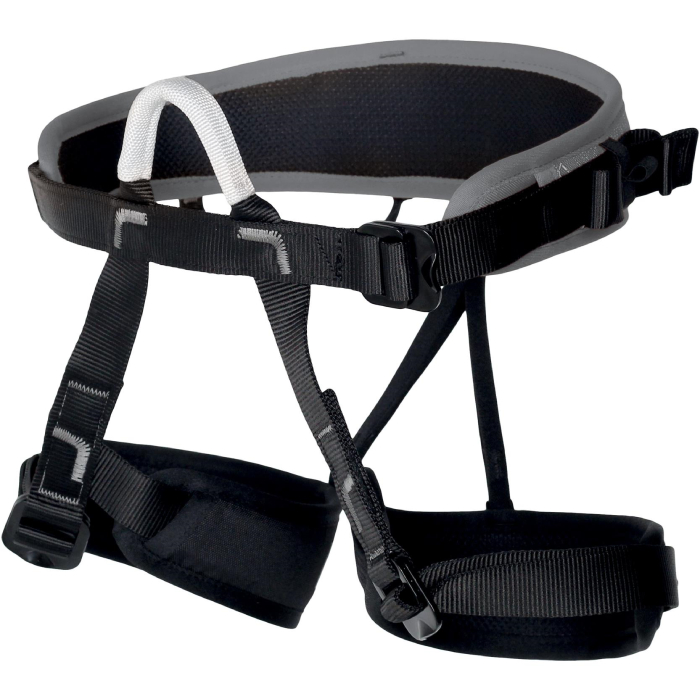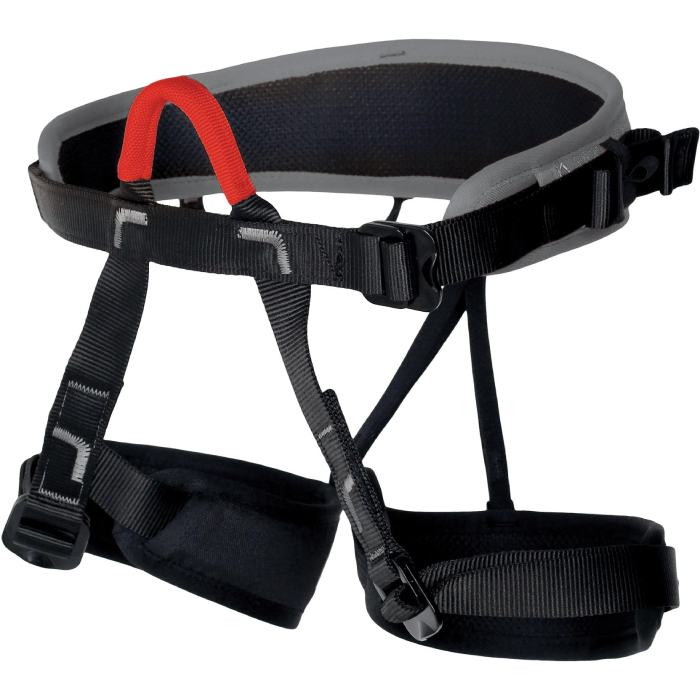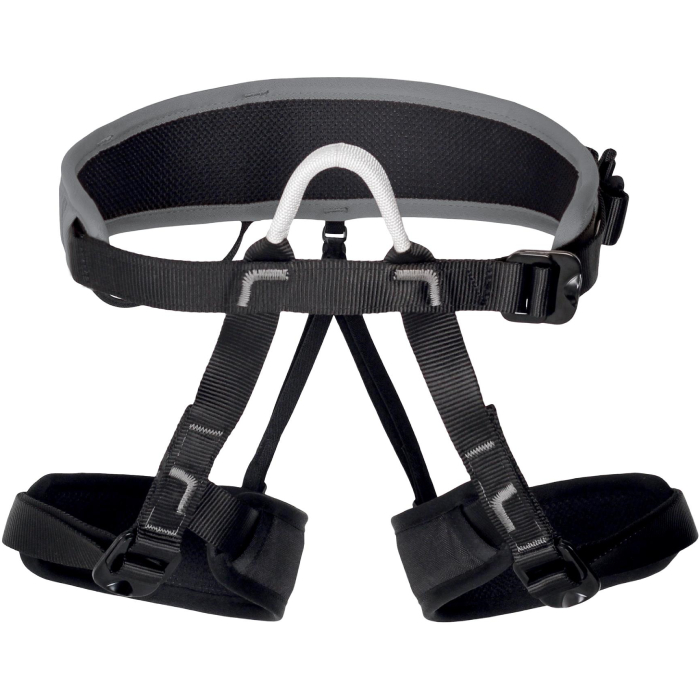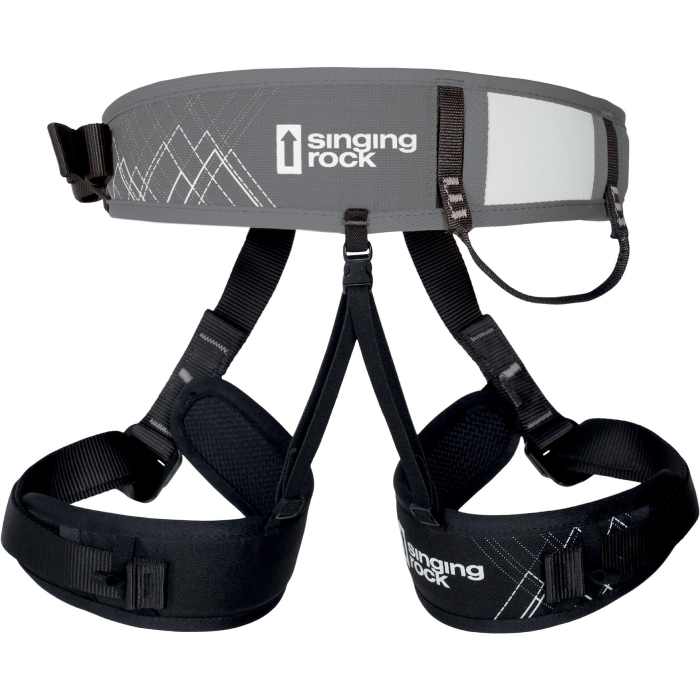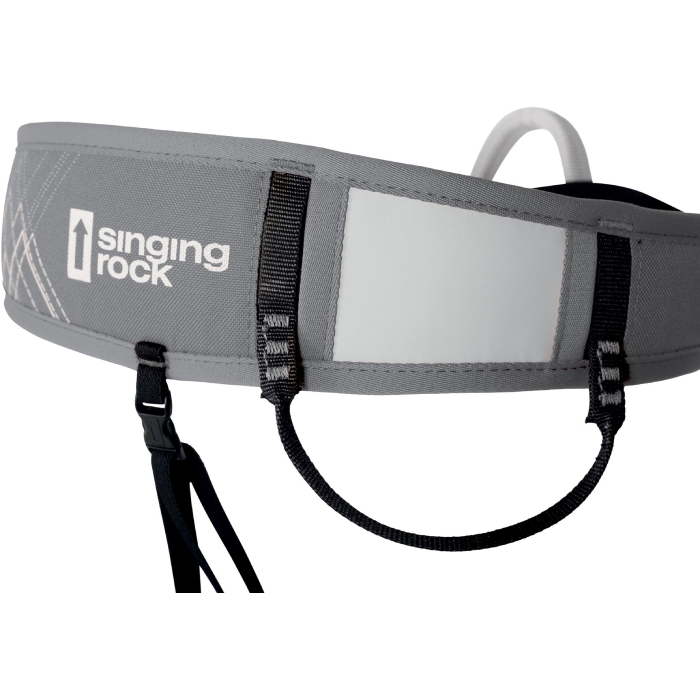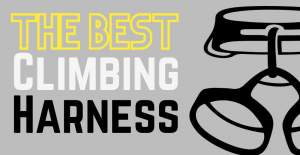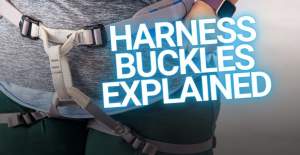How to use Singing Rock harness, storage and maintenance with instructional pictures.
Top Rental
Description
Padded sit harness with three buckles suitable mainly for beginners, rentals in climbing gyms or rope courses.
- non-openable buckles for easier dressing the harness
- removable and adjustable rear stretch straps
- one gear loop with a load capacity 10 kN (1 tone) increases safety in case of incorrect tying in
- marking label below the gear loop allows any marking on the harness
- comes in two sizes (XS-M; L-XXL) which adapt to all users
- inside mesh wicks moisture away and dries quickly in wet conditions
- reinforced tie-in loop for longer lifetime of the harness
- color distinguished tie-in loop (white = size XS-M, red = size L-XXL) for quick orientation when choosing a size
Padded sit harness with three buckles suitable mainly for beginners, rentals in climbing gyms or rope courses.
- non-openable buckles for easier dressing the harness
- removable and adjustable rear stretch straps
- one gear loop with a load capacity 10 kN (1 tone) increases safety in case of incorrect tying in
- marking label below the gear loop allows any marking on the harness
- comes in two sizes (XS-M; L-XXL) which adapt to all users
- inside...
Retail price
This Product is Hard to Find.
We don’t know where you can buy this item online in the US. We’ll continue to check all the major retailers and will update this page as soon as we find one.
If you know where to find this online in the US, let us know, and we’ll add the link.
Weight (g)  | 395 g |
| Fit | Unisex |
| Sizes | XS, S, M, L, XL, XXL, 1 Size Fits All |
Gear Loops  | 1 Gear loops |
Ice Clip Slots  | No, 0 |
| Belay / Tie-In | Tie-In |
| Waist Buckle Type | Quick Adjust |
| Leg Buckle Type | Quick Adjust |
| Drop Seat | Yes |
Haul Loop  | No (0kN) |
| Certification | CE, EN, UIAA |
| Size Chart | |
No reviews yet.
If you know of a good product video that should be here, let us know, and we'll put it up.
If you're looking for gear videos in general, check out our Vimeo and YouTube channels to see the newest gear.
A pictoral representation of UIAA-105 and EN-12277 standards for harnesses.
The UIAA equipment standard provides a baseline for equipment performance in a test lab under controlled conditions on new equipment. Although these test conditions are relevant to the conditions encountered climbing, conditions encountered at the crags and the condition of the equipment are equally important. This recommendation from the UIAA member federation The British Mountaineering Council (BMC) provides vital equipment information that is NOT explicitly addressed in the standard, particularly failure modes of the equipment and recommendations for the use, inspection, maintenance, and retirement of equipment.


